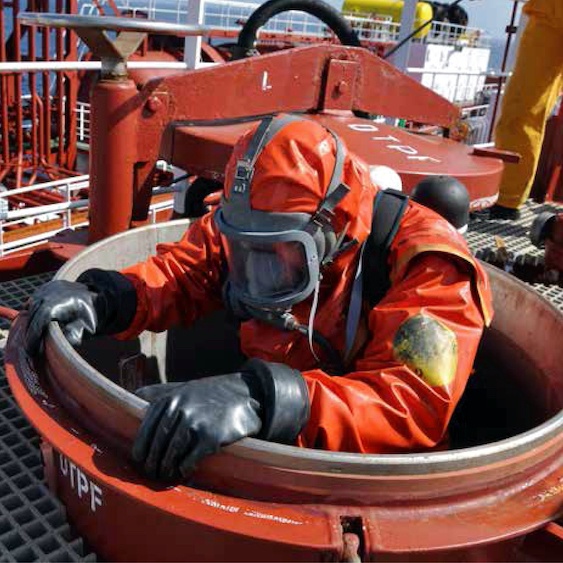Gas testing is the process of evaluating the concentration of potentially hazardous gases in a particular area or workspace. Gas testing is often used in industries where there is a risk of exposure to toxic, flammable, or explosive gases, such as oil and gas, chemical manufacturing, mining, and construction. Gas testing is also commonly used in confined spaces, such as tanks, vessels, and underground tunnels, where there is a risk of asphyxiation due to a lack of oxygen or the presence of toxic gases.
The specific types of gases that are monitored during gas testing can vary depending on the industry and the nature of the work being performed. Common gases that may be monitored include carbon monoxide, hydrogen sulfide, methane, oxygen, and volatile organic compounds (VOCs).
Gas testing is a critical component of workplace safety, and it is important that it is performed by trained and certified individuals who are knowledgeable in the principles and techniques of gas testing and who are able to interpret the results and take appropriate action to ensure a safe working environment.
The goal of gas testing is to identify and mitigate potential hazards to ensure a safe working environment. Here are the basic steps involved in gas testing:
- Determine the objectives: The first step in gas testing is to determine the specific objectives of the test. This may include identifying the types and concentrations of gases present, evaluating the effectiveness of ventilation systems, or assessing the risk of explosion or other hazards.
- Select the appropriate gas detection equipment: Once the objectives are established, the appropriate gas detection equipment is selected. This may include portable gas detectors, fixed gas monitoring systems, or manual sampling and analysis methods.
- Calibrate the gas detection equipment: Before conducting gas testing, the gas detection equipment must be calibrated to ensure accurate readings. Calibration involves exposing the equipment to a known concentration of the gas being measured to ensure it is accurately detecting the gas.
- Conduct the gas test: Gas testing is conducted by using calibrated equipment to measure the concentration of the gases in the area being tested. The testing may be conducted in real-time using continuous monitoring or as a one-time measurement using a manual sampling method.
- Analyze the results: After the gas testing is complete, the results are analyzed to determine if the concentrations of the gases present are within safe levels. If hazardous gas concentrations are detected, appropriate measures must be taken to mitigate the risk, such as ventilating the area, using personal protective equipment (PPE), or shutting down the equipment or process that is producing the hazardous gases.
- Record and report the results: The results of the gas testing must be recorded and reported in accordance with applicable regulations and standards. This documentation may include details about the testing objectives, the gas detection equipment used, the testing methodology, and the results and corrective actions taken.
Who are Authorized Gas Testers (AGTs) and What are the Qualifications and Criteria for Becoming Certified Gas Testing Professionals :
Authorized Gas Testers (AGTs) are individuals who have been trained and certified to perform gas testing in compliance with relevant regulations and industry standards. The criteria for becoming an AGT may vary depending on the specific industry and regulatory requirements but generally include:
- Completion of a recognized authorized gas tester online course: AGTs are typically required to complete a training course that covers the principles and techniques of gas testing, as well as relevant regulations and industry standards. This training may be provided by a training organization or employer.
- Demonstration of competency: AGTs must demonstrate their competence in gas testing through practical assessments and evaluations. This may include conducting gas tests in a controlled environment, interpreting gas testing results, and taking appropriate corrective actions in response to gas hazards.
- Understanding of relevant regulations and standards: AGTs must have a thorough understanding of relevant regulations and industry standards related to gas testing, such as OSHA, EPA, NFPA, and ANSI/ASSE standards.
- Physical fitness: AGTs may be required to work in confined spaces or at heights, and must be physically capable of performing gas testing duties.
- Medical fitness: AGTs may be required to undergo medical examinations to ensure they are fit to perform gas testing duties and do not have any conditions that may affect their ability to perform the job safely.


No comments yet